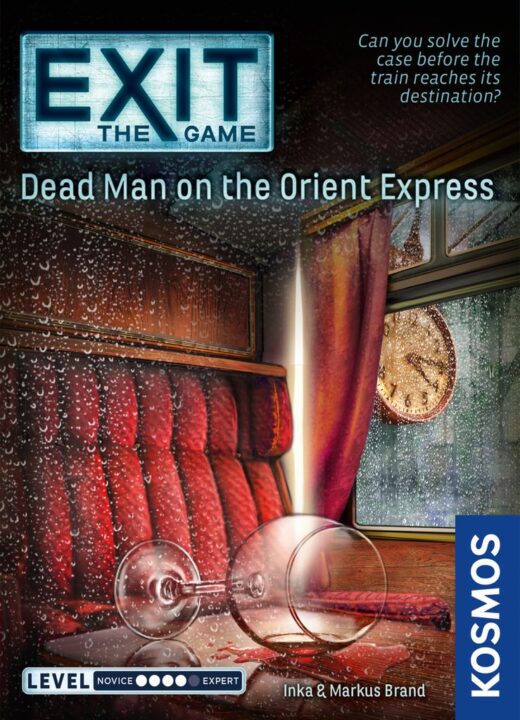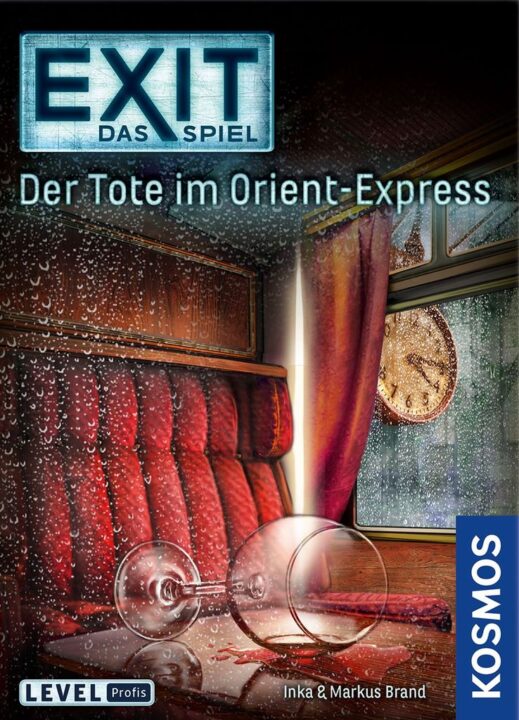Overview
Welcome to this eclectic review of Exit: The Game – Dead Man on the Orient Express, a puzzling detective escapade where teamwork and wit challenge the smartest of sleuths. Nestled within this box lies a myriad of mental enigmas that invite players to collaborate and immerse themselves in a riveting journey of discovery. As we explore the intricate underpinnings of this game, we will see how its rules and mechanics go beyond the board and speak to the power of human interaction and shared cerebral adventure. Prepare yourself for an analysis of how ‘Exit’ masterfully weaves its narrative through elegant puzzles, carefully orchestrated clue trails, and its impressive prowess to foster social ties. All aboard for an in-depth look at a game that promises to both confound and enchant!
How It Plays
Embarking on a thrilling adventure reminiscent of a classic Agatha Christie novel, ‘Exit: The Game – Dead Man on the Orient Express’ invites players to solve a murder mystery on a moving train. In this acclaimed escape-room-in-a-box, the rules combine story-driven puzzles with teamwork to unravel the game’s intricacies.
Setting Up
Players begin by opening the game box, lay out the materials provided, review the rulebook, and set the scene by reading the introduction. Some components need to stay unseen and reveal themselves only when the puzzle narrative dictates. Straightforward setup immerses players without delay into the game’s ambience, complete with riddles to solve and decisions to make that drive the narrative.
Gameplay
Players collaboratively use clues from cards and unfolded materials to tackle riddles. As teams answer puzzles, they cross-reference the solution wheel with the booklet to lead them to new clues or confirm that they’re on the right track, providing immediate feedback and new paths to explore.
Winning the Game
To triumph, players must untangle all of the mystery’s threads, corral the correct answers, and solve the overarching riddle of the killer’s identity before the time runs out. It’s a dash against the clock to combine cerebral insight with cooperative strategy, focusing less on point totals and more on collective accomplishment through the shared escape room experience.
Want to know more? Read our extensive strategy guide for Exit: The Game – Dead Man on the Orient Express.
The Ingenious Puzzles of the Orient Express
Unpredictable Variety
Exit: The Game – Dead Man on the Orient Express doesn’t fail to surprise with its array of conundrums. During one of our nail-biting sessions, I remember the table brimming with intrigue as we tackled a particularly vexing code. Moreover, the puzzles encompass a range of types – from spatial reasoning to linguistic twists – catering to the strengths of different players in our group. It’s this diversity that keeps every player engaged.
Gratifying Complexity
Frequently, I find games hitting a complexity ‘sweet spot’ captures my group’s attention most magnetically. Exit’s Dead Man on the Orient Express encapsulates this concept by interweaving complexity within its diverse puzzles in a balanced and satisfying manner. At one moment, a breakthrough would elicit triumphant cheers as we hastily scribbled down apparent murder schemes and motives. The delightful intricacy resonates through dovetailing clues that compound into moments of collective eureka.
In our next section, we’ll detour into another critical aspect – the seamless Clue Integration and Flow.

Masterful Clue Choreography
Few games maintain intrigue like Exit: The Game – Dead Man on the Orient Express. I recall a play session where my friends and I, completely engrossed, sifted through a collaboration of clues that unfolded like a well-scripted drama. The ingenuity it welds in integrating nuanced clues into the overall flow of the gameing is occasionally nothing short of mesmerizing.
Seamless Clue Connections
Indeed, transitioning from one puzzle to the next, the game escorts players through an experience punctuated by smooth clue integration that beckons collective thought. One particularly joyous memory is of my gaming cohort voicing a collective gasp as what seemed like an unrelated set of items coalesced into a crystal-cut answer—a testament to the game’s sequential logic.
Aligned Directions
Sequential yet free-form, the arrangement of divergent hints into a cohesive path to resolution never felt force-fed. Rather, it encouraged exploration and inventive thinking, elevating our evening from a simple game night to a detective’s den of satisfaction and suspense. Ever steering towards an inclusive balance between revelation and challenge.
With expectations high and sleuthing caps adjusted, we brace for deduction’s social counterpart in Exit: The Game – Dead Man on the Orient Express up next: Social Interaction and Cooperation.

Teamwork Unlocks The Mystery
Reflecting on my mammoth playthroughs of Exit: The Game – Dead Man on the Orient Express, it’s the collective brainteasing – those electrifying moments of collaborative revelation – that truly finance its worth. One memory stands vivid, a session with friends nestled around the table; when a vexing riddle left us stumped. It underscored a stroke of genius in game design, petitions for diverse perspectives, weaving the need for cooperation intrinsic to the experience.
The Power of Diverse Thinking
Often, a puzzle mocked our collective intelligence, that is until someone’s unique viewpoint, like a well-aimed dart, hit the bullseye effortlessly. Each scenario imposingly demands varied angles of approach, urging a symbiotic merge of thought.
Dynamic Group Engagement
Conversation is the lifeline of this game. Suggestions ricochet across the table, making every player indispensable. This phenomenon of shared struggle and triumph underlies the game’s core appeal and holding a mirror to its achievement as a social vehicle is indispensable. In closing, if cohesion and spirited engagement rank high on your gaming checklist, you’ll likely commend this as much as I.

Conclusion
As we conclude this review, ‘Exit: The Game – Dead Man on the Orient Express’ has taken us on a thrilling detective journey filled with complex puzzles, integrated clues, and a demand for social interaction and cooperation that rivals the best of thematic adventures. It’s a ride that tests your intellect and fosters camaraderie—a must-play for those who relish a challenging group task. Whether you’re a seasoned escaper or new to the genre, this game promises a memorable experience. All aboard for the final verdict – it’s a rave from this reviewer.

